The Viking Age, stretching from the late eighth to the early 11th century, marked a pivotal era of exploration, trade, and conquest. From their Nordic homelands, Vikings voyaged widely across Europe and beyond, leaving an indelible imprint on the lands they encountered.
Denmark, Germany, Norway, and Sweden hold a rich tapestry of Viking history within their boundaries, revealing compelling tales of power, artistry, and exploration. Our journey across these four countries takes us through UNESCO World Heritage Sites that testify to the Viking legacy.
From the towering Danevirke fortifications to the mystic Jelling runic stones, the ancient trade hub of Hedeby, the rock carvings of Tanum, and the Viking cities of Birka and Visby, we voyage through time, retracing the footsteps of the Vikings in their historical heartlands.
The UNESCO World Heritage Sites discussed in this blog are all visited as part of our Scandinavian Tour: The Vikings of Denmark, Germany, Norway & Sweden. And if you are fascinated by the Viking Age, we’re sure you’ll be interested in many more of our European History Tours uncovering how the ancients lived.
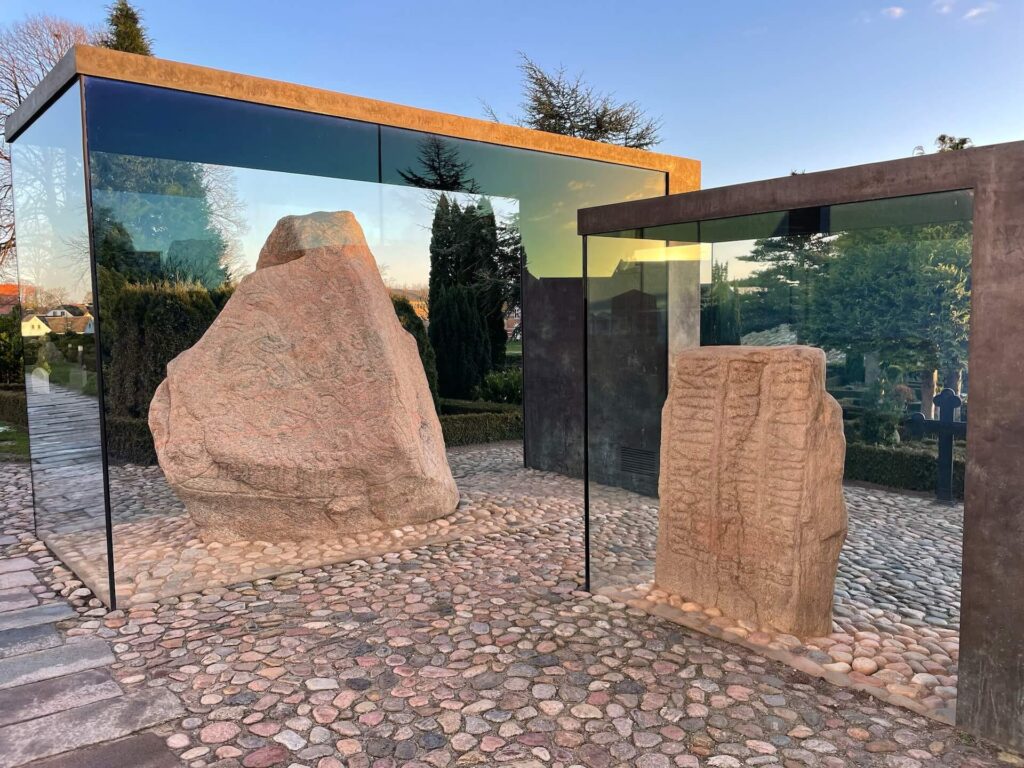
The Vikings in Denmark
As the springboard from which the Viking Age was launched, Denmark was both the home of powerful kings and the origin of many of the voyagers who would raid, trade, and settle across Europe and beyond.
The rise of the Danish kingdom under the likes of King Gorm the Old and his son, Harald Bluetooth, demonstrated the increasing political sophistication and reach of Viking leaders.
From the fortifications of Danevirke to the religious life immortalized in Jelling’s runic stones, Denmark’s captivating Viking history speaks of a society in flux, caught between ancient traditions and emerging nationhood.
Jelling
In the heart of Jutland lies Jelling, a small town with a monumental Viking legacy. Home to a pair of large carved runic stones erected by King Gorm the Old and his son, Harald Bluetooth, Jelling is often referred to as “Denmark’s birth certificate.” The larger stone, erected by Harald, proclaims his conversion of the Danes to Christianity and his unification of Denmark and Norway.
The archaeological value of these stones is immense, providing a tangible link to the shift from old Norse religious practices towards Christianity. Visitors can explore the stones themselves, the surrounding burial mounds, and the nearby museum that provides additional context and interpretation.
(Those of you interested in early Christianity in Europe will enjoy our Archaeology of Ireland Tour.)
The Vikings in Germany
While the Vikings are more often associated with their Scandinavian homelands, their influence was strongly felt in places like northern Germany. The lands that would become Germany were both a destination for Viking raids and a region intertwined with the wider Viking trading network.
Hedeby, in particular, stands as a testament to this dynamic, a bustling trade hub where cultural exchange was as valuable as the goods being traded. From these interactions emerged a multifaceted view of the Vikings, not just as raiders but as traders and integrators in the complex network of the Viking Age.
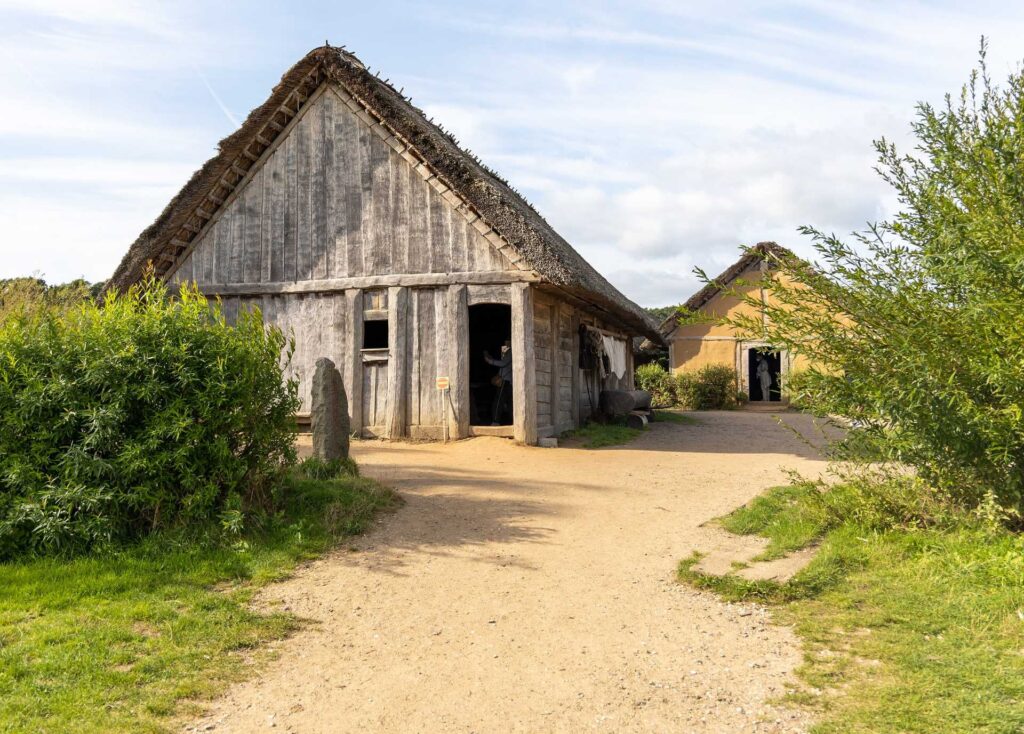
Hedeby
Situated at the head of the Schlei inlet in northern Germany, Hedeby was a bustling hub of commerce during the Viking Age. Traders from Europe and beyond converged at this lively port, exchanging goods from as far afield as the Mediterranean, the Middle East, and Scandinavia.
Archaeological excavations at Hedeby have yielded abundant artifacts, offering an intriguing glimpse into the economic and cultural life of the Viking Age. These range from trade goods and ship remnants to tools, jewelry, and even traces of the city’s infrastructure.
Visitors can delve into this rich past at the Viking Museum Haithabu, near the site of Hedeby. Interactive exhibits, reconstructed buildings, and a portion of the original semicircular town wall bring the stories of this vibrant city to life.
Danevirke
Stretching across the Schleswig isthmus, the Danevirke fortifications were an imposing display of Danish power in what is today Germany’s Schleswig-Holstein region. This extensive system of walls, ditches, and ramparts was constructed in phases over several centuries, beginning in the Viking Age.
Danevirke’s strategic importance cannot be overstated – it was a formidable barrier, controlling movement between the Jutland Peninsula and the European mainland. This underlines the militaristic aspect of Viking society and their advanced understanding of strategic warfare.
Today, visitors can explore the surviving portions of the fortifications, which snake through the landscape, and the Danevirke Museum provides insights into the history and strategic importance of this remarkable structure.
(Those fascinated by this period of European history may wish to consider booking a place on our Cathedral Tour of France or Medieval History Tour of England.)
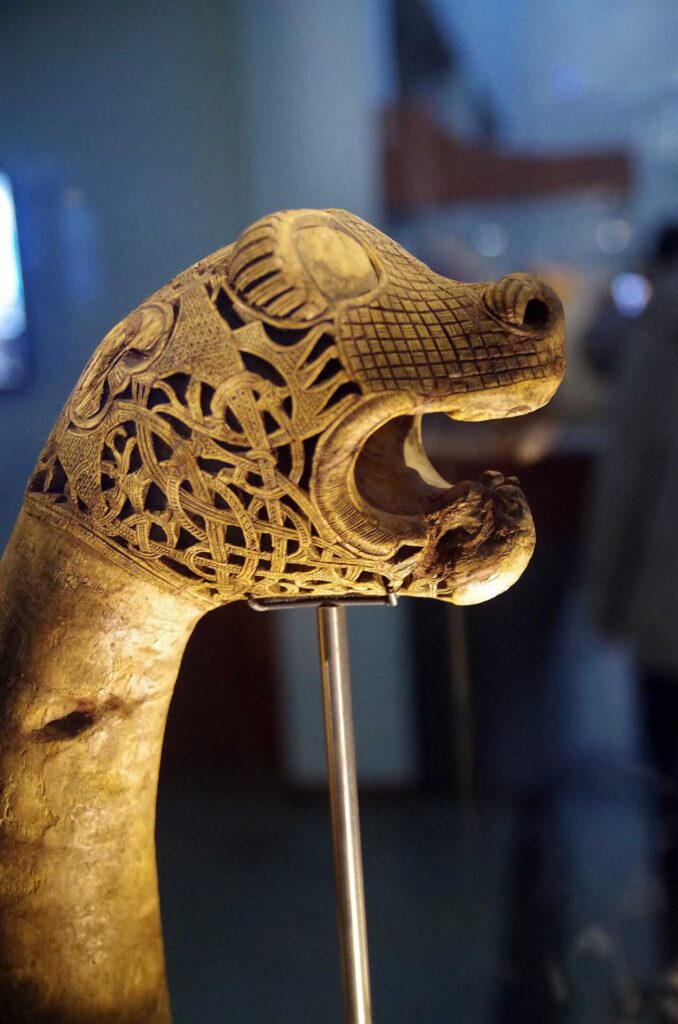
The Vikings in Norway
Norway, with its dramatic fjords and harsh terrain, was a center of Viking culture for nearly four centuries and bred some of the most accomplished seafarers of the Viking Age. The Norwegians, utilizing their deep knowledge of shipbuilding and navigation, traversed the open ocean to raid, trade, and even settle in distant lands such as Scotland, Ireland, Iceland, and Newfoundland in Canada.
In many ways, it is Norway that epitomizes the image of the seafaring Viking, their sleek, swift longships becoming symbols of a civilization on the move. And it is in the burial mounds of Norway that some of the most spectacular artifacts of the Viking Age have been found, silent witnesses to the wealth, artistry, and beliefs of this remarkable period.
The Museum of the Viking Age and Viking Ship Museum, Oslo
No exploration of the Viking Age in Norway would be complete without a visit to the Museum of the Viking Age in Oslo. The Viking Ship Museum part of the museum’s collections is home to the world’s best-preserved Viking ships, the Oseberg, Gokstad, and Tune, the museum provides a unique window into the maritime mastery of the Vikings.
The Oseberg and Gokstad ships, in particular, are remarkable for their intricate woodwork and the wealth of artifacts found within them. These include everything from beautifully carved animal heads to sleds, beds, a tent, and even textiles – a rare survival from this period.
Visiting the museum offers an unparalleled opportunity to understand the craftsmanship, seamanship, and beliefs of the Viking society. The burial ships, richly laden with goods, echo the Vikings’ beliefs in the afterlife and their penchant for adventurous voyages – even into the next world.
(Please note: The Viking Ship Museum is closed for renovations until 2025/26, though you can still visit the excellent Museum of the Viking Age when in Oslo.)
As we trace the path of the Vikings through Germany and Norway, we uncover stories of commerce, exploration, and spiritual belief, each uniquely woven into the Viking legacy. The tale continues as we gaze towards Sweden, another land shaped by these formidable seafarers.
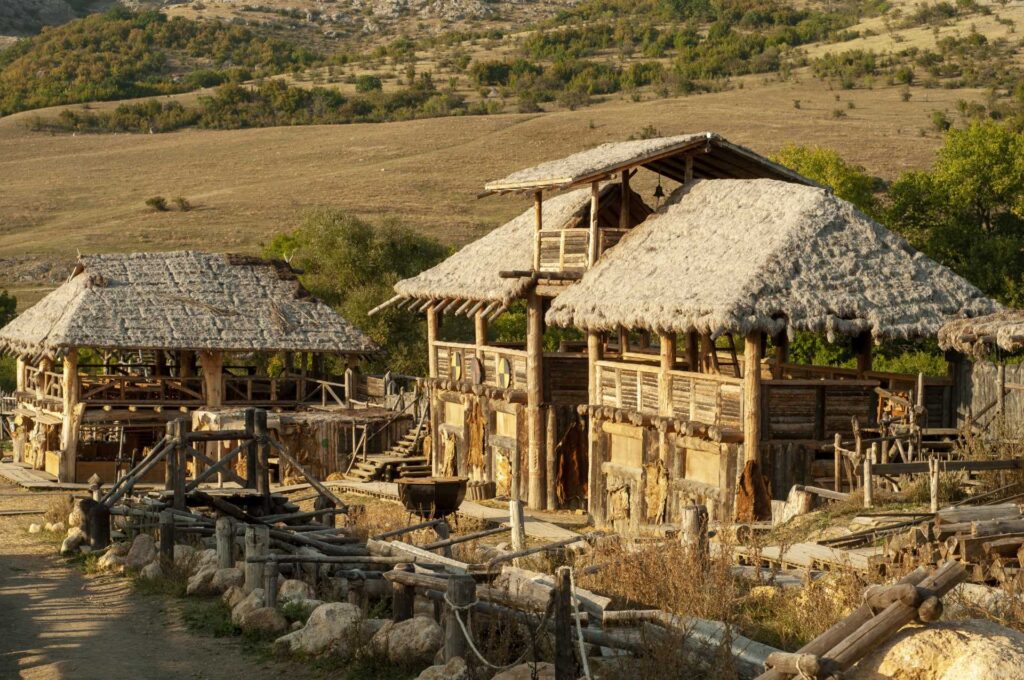
The Vikings in Sweden
In the Viking Age, Sweden emerged as a dynamic center of power, trade, and exploration. Swedish Vikings, sometimes referred to as ‘Rus,’ journeyed down the rivers of Eastern Europe, establishing trade links with the Byzantine Empire and venturing as far as the Caspian Sea.
At home, they constructed significant trade centers like Birka and fortified towns such as Visby, leaving a legacy of economic vitality and political organization echoing into the Middle Ages and beyond. Their runic inscriptions and rock carvings reveal a society with its own unique expression of the wider Viking culture, blending influences from both West and East.
The Viking City of Birka
Nestled on the island of Björkö in Lake Mälaren, the ancient city of Birka was one of the most important trading centers during the Viking Age. It served as a vital link in the network of trade routes that connected far-flung parts of the Viking world, from the British Isles to the Byzantine Empire.
The archaeological discoveries from Birka provide a unique insight into Viking life. Excavations have uncovered many artifacts, including jewelry, weapons, and even the remains of the city’s fortifications and harbor structures.
When traveling to Birka, you can take a guided tour of the archaeological site, visit the reconstructed Viking village, and explore the museum that showcases many of the treasures unearthed here.
Of course, should you choose to explore the site with Far Horizons, you will be guided through this land of archaeological wonder by a leading scholar in Viking history. Browse our Worldwide Archaeological Tours and find your dream trip!
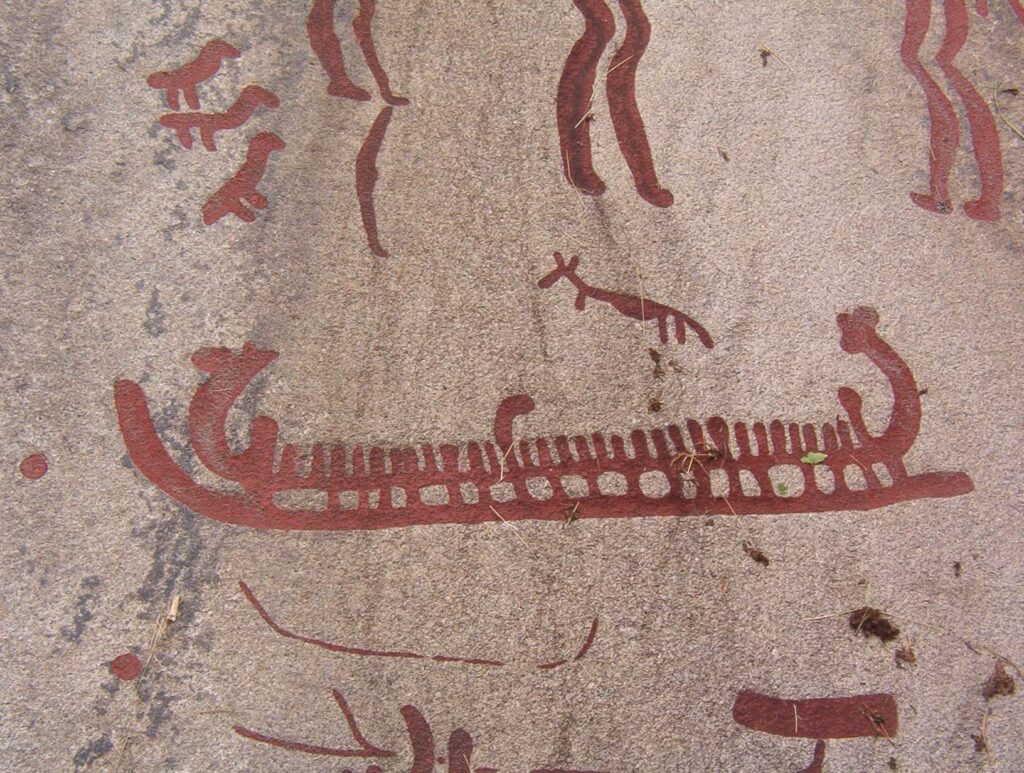
(Public domain)
Rock Carvings in Tanum
Tanum, on Sweden’s western coast, is renowned for its Bronze Age rock carvings. This gallery of prehistoric art provides a fascinating glimpse into the belief systems of the era, with carvings depicting everything from daily life and warfare to spiritual and ceremonial scenes.
While not strictly of the Viking Age, the Tanum rock carvings offer an invaluable context to the spiritual and cultural landscape that preceded and, in part, shaped the Viking Age. Guests can explore various rock art sites and the Vitlycke Museum, which offers interpretive displays and guided tours.
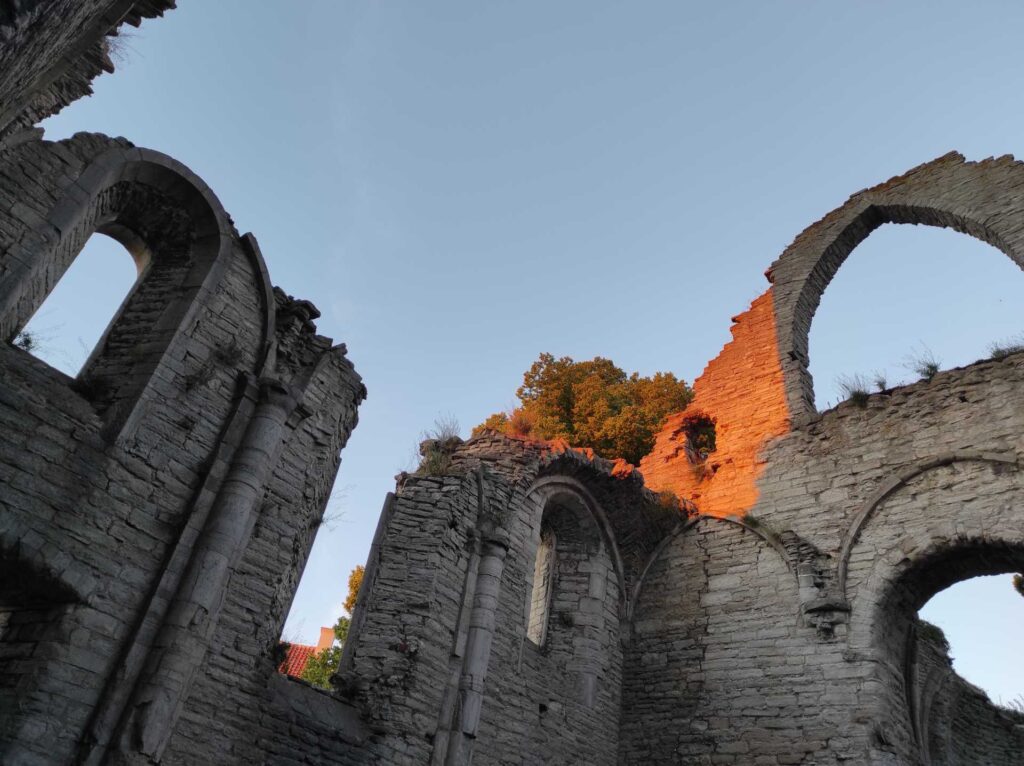
Visby
Located on the island of Gotland, Visby was an influential Viking Age and medieval seaport. Its remarkably well-preserved city walls, medieval architecture, and the ruins of churches create a captivating snapshot of history.
While Visby’s golden age arrived a bit later in the Middle Ages, the foundation of its prosperity was laid during the Viking Age, thanks to its strategic position on the trade routes of the Baltic Sea.
Through exploring Visby, you will learn how the seafaring prowess and nautical culture of the Viking Age would influence medieval Europe and contribute to the creation of the Hanseatic League, an international trade network that would remain influential into the Early Modern period.
Begin Your Adventure…
Our journey through the UNESCO Sites of the Viking Age has taken us from the runic stones of Jelling to the ship burial mounds of Norway, the trading hubs of Hedeby and Birka, the rock art of Tanum, and the historic seaport of Visby. Each site, in its unique way, brings us closer to understanding the complex, intriguing, and far-reaching culture of the Vikings.
Preserving these sites is crucial to safeguarding our shared heritage. They are monuments to human ingenuity, resilience, and the irrepressible urge to explore and connect. As we look back on our voyage through these places, we find ourselves not just observers of the past but participants in an ongoing story that continues to shape our present world.
Our exploration underscores one fundamental truth about the Vikings – they were not just raiders and seafarers but also traders, explorers, artisans, and engineers.
Their legacy, preserved in these UNESCO Sites, is an essential chapter in the shared history of Europe, reminding us of our interconnected past and the timeless value of cultural exchange.
Browse our calendar of 2024 Trips and find the historical adventure that sets your imagination aflame. If you have any questions, please contact us.



